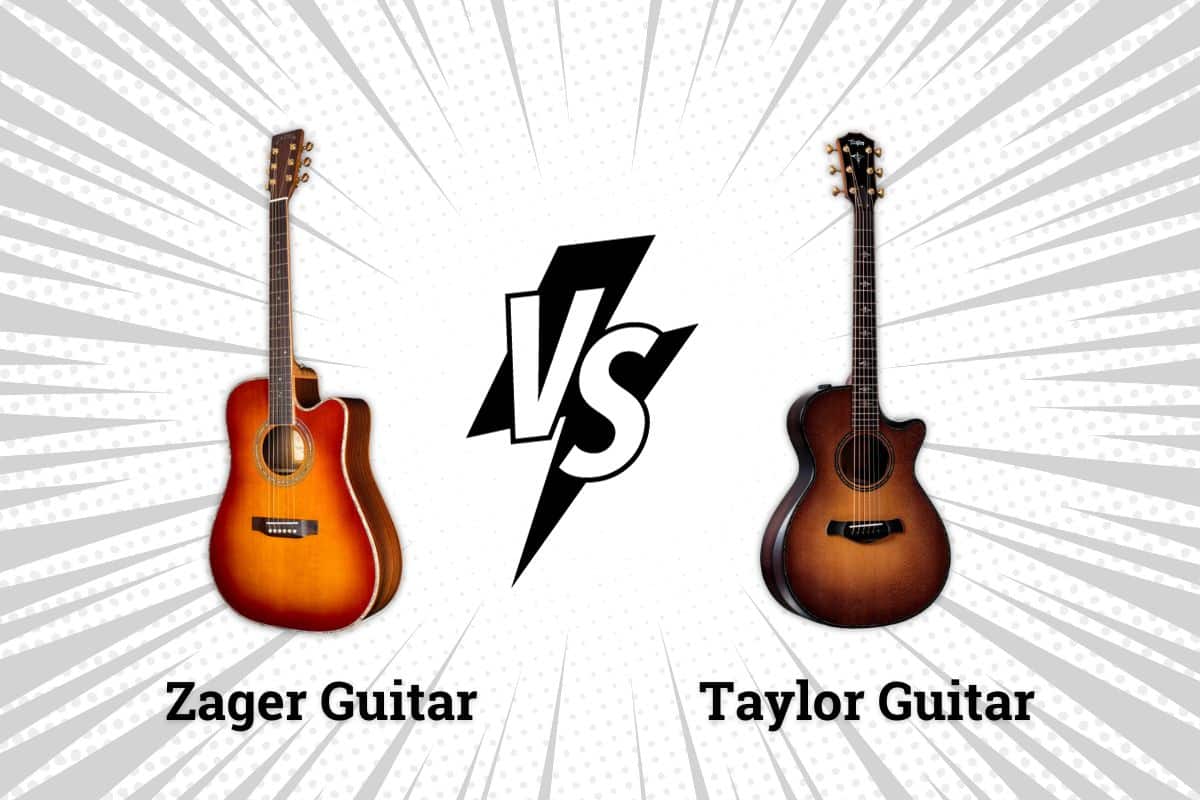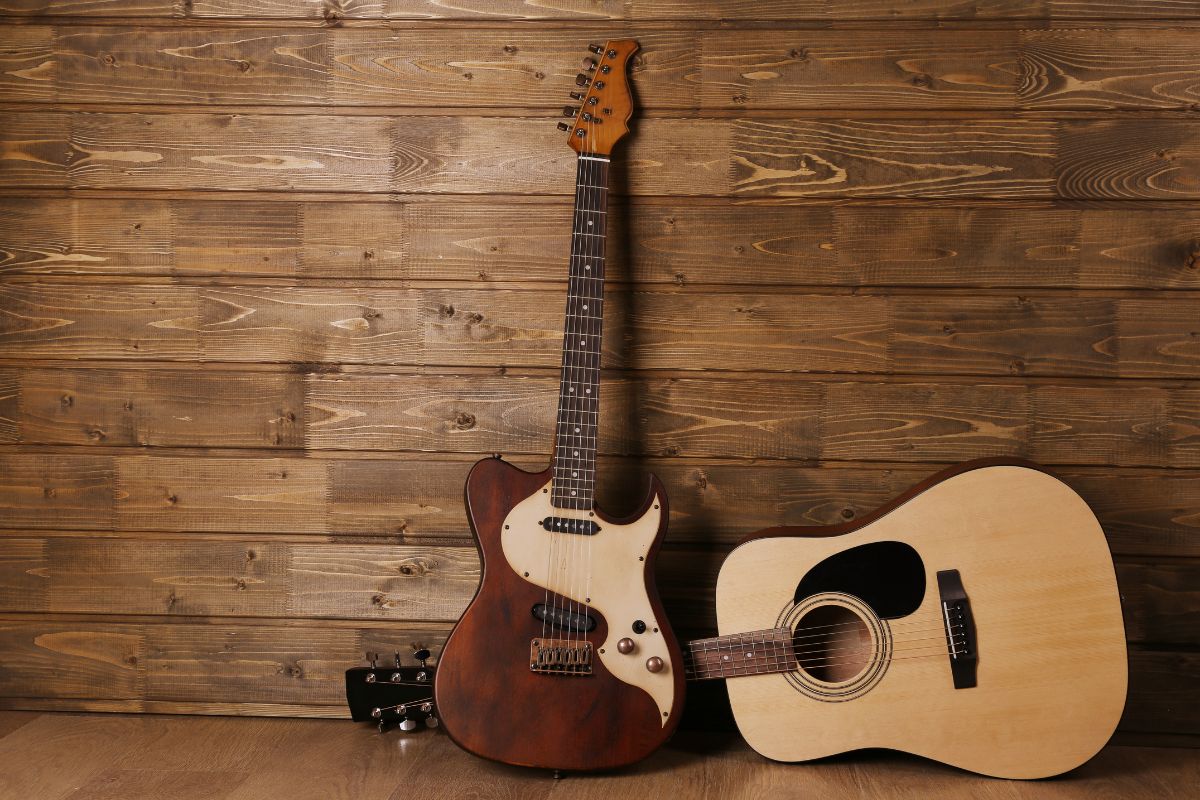
The guitar world has changed drastically over the years. Big names like Gibson, Fender, Epiphone, PRS, Taylor, Martin, Ibanez, Lakewood, and Zager are bringing innovative ideas and more convenient guitar constructions and designs each year.
According to Business Research, The Market Size value of Acoustic Guitars was around 297.55 Million USD in 2021.
Also, the growth rate was around 5.5% globally.
Speaking of guitars, Mr. Denny Zager started Zager Guitar in the late 60s with his personal experience and expertise. His handcrafted guitars are taking their places among the big names in the guitar industry. ZAD900CE, Parlor-E, or ZAD50CE Mahagony guitars are the famous picks in the series.
On the other hand, In 1972, Mr. Sam Radding started a guitar shop called American Dream. He happened to employ a hardworking fellow called Bob Taylor. Later on, Bob Taylor started Taylor guitars. Cut back to 2023, we are getting high-end guitars like Taylor Builder Edition 517e, Builder Edition K24ce, or Taylor 814ce. No doubt, Taylor is one of the biggest names in the guitar industry.
What we have here is a little comparison between Taylor guitars and Zager guitars. This comparison module solely focuses on consumer needs.
Not everyone needs a high-end custom-built guitar. If you want one, you need to tick some checkboxes. We will focus on the details that one can easily miss out on. We do have some recommendations for you as well.
Check This Quick Review From Ricky Lynn Gregg
Basic Differences At A Glance
| Taylor | Zager | |
| Body Shape | Various | Custom |
| Body Material | Sitka Spruce Top and Layered Walnut | Rosewood with Spruce |
| Neck | Maple | Bolivian Rosewood |
| Frets | 20 | 20 |
| Inlay | Mother of pearl | Pearl and Abalone |
| Fretboard | Ebony | Bolivian Rosewood |
| Tuning Keys | Chromatic | Grover |
| Case Included | Hardshell case | No |
| Warranty | Lifetime | Lifetime |
| Pricing | Check the pricelist | Check the pricelist |
Zager Guitar (History and Overview)

Mr. Denny Zager started to play guitar back in 1949. He was a guitar prodigy and left his footprints in music at an early age. His number 1 hit song In the year 2525 stayed in the top chart for six weeks in 1969. It was a blast and listeners from all over the world got to know about Mr. Zager more closely. He also started the Zager learning system. The learning system was initially for his son. Meanwhile, he started guitar modification for more comfortable playing.
Zager guitars are made with solid wood. As a result, guitar players have a more profound sound and long-lasting guitar. Also, construction-wise the guitars are easy to play. With Fishman products and genuine Grover tuning machines, the guitars are well-equipped with proper electric hardware. You can purchase a guitar directly from the factory in Nebraska. The electronics of the guitar come with 2 years of warranty.
Zager Guitar plans to donate $1 million to a program called the Guitar for Kids. They will donate high-quality guitars (worth $ 1 million) to the well-deserving kids. John Mall High School in Walsenburg.
| What Are You Getting In Zager Guitars? | |
| Solid Wood Guitar Grover Tuning Machine Fishman Electronics Hand-carved Bone Nut Hand-carved Cow Bone Saddle |
Hand-scalloped Bracing Hand-filed Metal Frets Bolivian Rosewood Fretboard High-quality Gloss Finish Zager custom strings |
Taylor Guitar (History and Overview)

Bob Taylor and Kurt Listug founded Tayor Guitars in 1974. Bob Taylor is one of the most visionary guitar craftsmen in the guitar world. As a result, Taylor has managed to permanently set their name on the prestigious and high-value brand list.
The manufacturers blend modern manufacturing techniques with detailed craftsmanship in a very subtle way. The most common review from guitar players would be Taylor guitars can bring out the sound without extra effort.
Taylor distributes the guitars internationally in around 60 countries. Also, Taylor patented Taylor Neck in January 1999. It was the first major innovation in acoustic guitar designs in the last 100 years.
| What Are You Getting In Taylor Guitars? | |
| Eco-friendly, UV-curable finish Guitar gets better with age Multiple superior tonewood options V-class design bracing pattern Available for different guitar-playing styles |
Patented neck design Comfortable neck Comfortable armrest Bolt-on neck Responsible sustainability |
Zager Guitars Vs. Taylor Guitars: A Detailed Comparison
For convenience and fairness of comparison, we will consider the ZAD900CE 50th anniversary edition from Zager Guitars and Builder’s Edition 912ce from Taylor Guitars. We will compare the guitar body, construction, strings, and tone for the overall comparison.
Guitar Body Comparison (Woods)
When comparing two specific guitars, you must consider the richness of the wood. As the instrument’s significance depends on wood, you can consider this as the main material. When you are paying the extra thousand bucks for a guitar, you are actually paying for these top-quality tonewoods, craftings, and electronics.
| ZAD900CE | Builder’s Edition 912ce | |
| Back | Indian Rosewood | Indian Rosewood |
| Sides | Rosewood | Lutz Spruce |
| Neck | Mahagony with Inlay | Tropical Mahagony |
| Headstock | Indian Rosewood | Indian Rosewood |
| Front | Solid Sitka Spruce | Solid Sitka Spruce |
Guitar Construction Comparison
Craftmanship sets the overall performance for the guitar. Both the guitars go through extreme craftsmanship in the process. Mr. Denny Zager has mastered the art of craftsmanship throughout 3 decades of guitar production. The Zager guitar lines like 20, 50, 80, or the 900 series come with extremely detailed craftsmanship, a unique bracing system, and high-quality finishes. On the other hand, Taylor guitars are specifically known for their craftsmanship in the guitar world. Their attention to detail makes all the difference.
| ZAD900CE | Builder’s Edition 912ce | |
| Color | Natural | Natural |
| Tuning Machine | Genuine Grover | Gotoh |
| Fretboard | Rosewood | West African Crelicam Ebony |
| Inlay | Full abalone and pearl | Ascension |
| Nut | Hand-carved from bone | TUSQ nut |
| Saddle | Tusq hand-curved saddle | Micarta |
| Finish | High Gloss | Silent Satin |
| Strings | Zager | D’Addario XS Phosphor Bronze, .012-.053 |
| Binding | Hand Built Maple Binding | Abalone/Ebony |
| Truss Rod | Dual Action | Standard |
Tone and Sound Quality Comparison
Tonal efficiency will set your guitar apart. We are talking about two high-end guitar brands that focus on tone and sound outputs religiously. With superior tonewood and great craftsmanship, Both Taylor and Zager bring out the rich acoustic sound. Zager ZAD900 is 15% more powerful in sound and clarity than the 80’s series.
| ZAD900CE | Builder’s Edition 912ce | |
| Tonewood | Solid Sitka Spruce/Indian Rosewood | Indian Rosewood |
| Size | 41.00 x 15.50 x 4.75 Inches | 46 x 20 x 9 inches |
| Bracing | Can move half a millimeter more | V class bracing |
| String Choices | Zager Custom Light String | D’Addario XS |
| Shape | Dreadnaught | Grand Concert |
| Neck Profile | Venetian Cutaway | Beveled Cutaway |
| Electronics | Fishman Aura Sound Imaging System | Expression system 2 |
Strings Comparison
Zager’s 60 years of research makes the 50% less pressure on the strings. It’s amazing to see the custom string spacing and lower string heights. Playing will also be much more comfortable with low string pressure. For convenience, it’s called pillow touch strings. On the other hand, Taylors come with a D’Addario XS set of strings.
| ZAD900CE | Builder’s Edition 912ce | |
| Gauge | 10, 11, 12, and 13 | .012-.053 |
| Brand | Zager | D’Addario |
| Material | Phosphor Bronze | Phosphor Bronze |
| Coating | Coated | Coated |
| Tension | Medium | Medium |
| Winding | Roundwound | Roundwound |
| Playing Styles | Versatile | Versatile |
Final Value For Money Comparison
| ZAD900CE | Builder’s Edition 912ce | |
| Price | 10/10 | 8/10 |
| Build Quality | 10/10 | 10/10 |
| Hardware Quality | 10/10 | 10/10 |
| Tonewood | 10/10 | 10/10 |
| Playability | 10/10 | 9/10 |
| Finish and Aesthetics | 10/10 | 10/10 |
| Accessories | 10/10 | 9/10 |
| Resale Values | 10/10 | 10/10 |
| Durability | 10/10 | 10/10 |
| Lesson Offered | Yes | No |
| Warranty | Lifetime | Factory Warranty |
Famous Artists Who Play These Guitars
| Taylor Guitar | Zager Guitar |
| Tony Iommi Taylor Swift Zac Brown Daryl Hall and John Oates Dave Matthews |
Dave Roe Andre Coutu Phil Collen Aaron Lewis Chris Lester |
So, Which One Should You Get?
Understand the fact that guitars are very personal. Before making a purchase, you must know your taste, playability, genre preferences, skills, and overall requirements.
Taylor guitars are fantastic picks for newbie guitarists to professional artists. If you pick up a GS mini as a starter guitar, you can feel a fresh start on your musical journey. When you pick the Zager guitar, you have a plethora of customization options, craftsmanship, unique sound, and a 100% money-back guarantee.
If you want to get your hands on exquisite-level rich-sounding guitars, pick a Taylor. If customization, personal craftsmanship, and value-for-money factors matter to you, definitely pick a Zager guitar.




